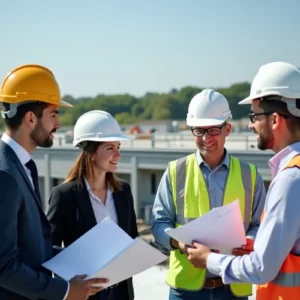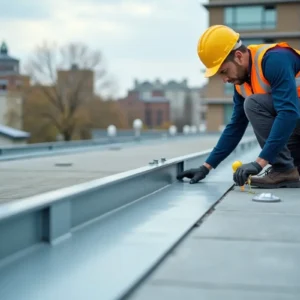Real estate investment has emerged as one of the most transformative forces affecting the fabric and future of local neighborhoods. From breathing new life into underdeveloped areas to supporting local economies, the impact of investment is felt at every level.
The involvement of professionals such as West Sedona real estate agents Sedona Experts helps ensure these investments align with both property values and community aspirations, helping neighborhoods thrive through thoughtful development and revitalization projects.
At its best, real estate investment can introduce much-needed amenities, encourage new business and job growth, and offer vital solutions to housing shortages. Yet, it also introduces complexities, particularly when large institutional investors reshape the traditional homeowner landscape and influence neighborhood culture.
Understanding these dynamics is crucial for residents, local leaders, and investors seeking to strike a balance between economic opportunity and the genuine needs of a community.
Contents
- 1 Revitalizing Neighborhoods Through Investment
- 2 Economic Boost and Job Creation
- 3 Affordable Housing Initiatives
- 4 Institutional Investors and Community Dynamics
- 5 Community-Owned Real Estate Models
- 6 Sustainable Development and Environmental Impact
- 7 Preserving Cultural and Historical Identity
- 8 Conclusion
Revitalizing Neighborhoods Through Investment
Investment into neglected or underutilized real estate is a proven path toward revitalizing entire communities. Investors are increasingly targeting properties ripe for redevelopment, converting abandoned structures into attractive residences or flourishing retail hubs. This transformation uplifts the local aesthetic, increases property values, and serves as a catalyst for broader community engagement.
When implemented thoughtfully, these projects foster a renewed sense of pride and unity. Communities begin to flourish as locally owned small businesses, restaurants, and service providers return—filling formerly vacant blocks and reopening critical sectors that keep neighborhoods vibrant and connected.
Economic Boost and Job Creation
Real estate development boosts local economies by creating jobs in construction, architecture, and related trades during development. New properties attract businesses, increasing employment and economic stability.
Developments also trigger a ripple effect, generating service jobs in cleaning, landscaping, hospitality, and logistics, expanding employment for residents. As businesses prosper, disposable income increases, supporting retail, entertainment, and neighborhood growth.
Affordable Housing Initiatives
The urgency for affordable housing remains a priority in many American cities, especially in growing markets. Investors see opportunities in converting old hotels into affordable or workforce housing, which addresses shortages and makes good use of land and resources.
These projects, when done right, promote inclusive access and community stability, offering hope to middle- and lower-income residents affected by rising rents. Programs by the Urban Institute show how public-private partnerships and incentives can significantly boost affordable housing while attracting investor interest.
Institutional Investors and Community Dynamics
Large institutional investors, such as private equity firms and investment trusts, are entering the residential real estate market, changing ownership models. These structures can lead to less property care, slower maintenance, and less neighborhood engagement.
Communities face increased absentee ownership, which can lead to decline, higher tenant turnover, and increased crime. A University of Colorado Boulder study notes that these shifts can also exclude first-time buyers, making it harder for residents to build equity and feel a sense of connection.
Community-Owned Real Estate Models
Innovative models, such as Community Investment Trusts (CITs), empower residents with investment opportunities that were previously reserved for larger investors. In Portland, Oregon, community members buy shares in their neighborhoods, gaining financial and governance stakes.
These strategies promote equitable redevelopment, retain wealth locally, and foster long-term involvement. As more regions adopt these, there’s hope that local ownership can reduce market volatility and protect neighborhood identities.
Sustainable Development and Environmental Impact
As environmental awareness grows, many real estate investments prioritize sustainability, utilizing energy-efficient buildings, green roofs, eco-friendly materials, and natural light to foster resilient communities. These practices reduce utility costs, minimize resource strain, and appeal to eco-conscious buyers and renters, ultimately benefiting both the environment and the economy.
Preserving Cultural and Historical Identity
One of the key challenges and opportunities in real estate investment is preserving neighborhood identities. Restoring historic buildings or reusing old structures, such as factories or train stations, retains a sense of place and creates residential or commercial space.
These efforts enhance tourism, foster local pride, and strengthen intergenerational bonds. By integrating history into modern upgrades, investors support community economic and cultural growth, safeguarding their stories and legacies.
Conclusion
Real estate investment has a profound impact on communities, providing substantial opportunities for economic development, housing innovation, and cultural preservation. As investment activity accelerates, all stakeholders—residents, local leaders, and investors alike—need to champion responsible, inclusive practices that prioritize the well-being and character of established neighborhoods for present and future generations.




